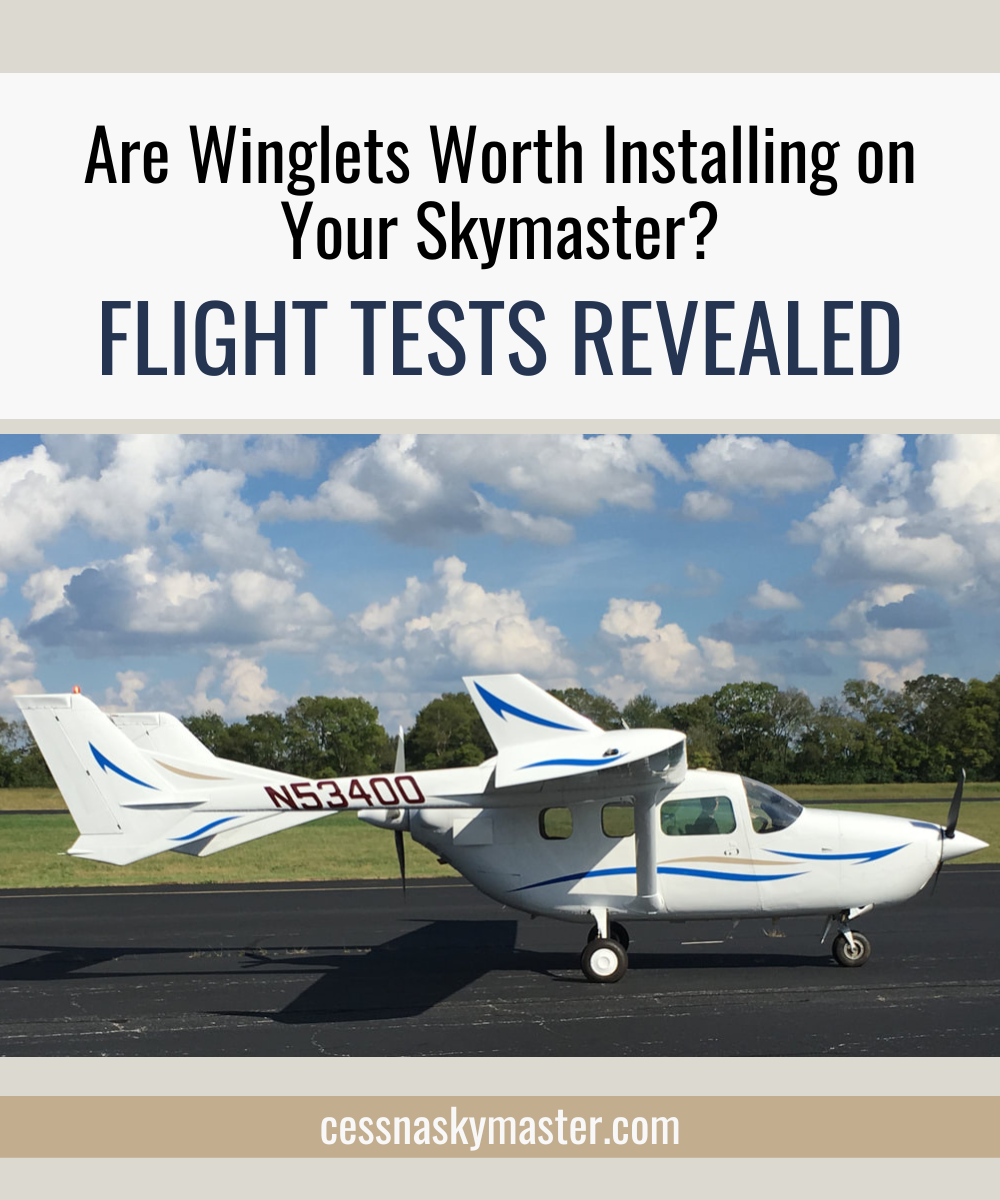Are Winglets Worth Installing on Your Skymaster? Flight Test Results Revealed.
Although not all small airplanes have winglets, they can have a major impact on the efficiency and performance of your aircraft. It’s one thing to read about the benefits of winglets, but how do you know if they will be worth it in the long run? We decided to put our custom winglets, designed and manufactured specifically for Cessna Skymasters, to the test.
In this post we’ll share:
What Winglets Are and Why They Matter
Different Types of Winglets
Putting Skymaster Winglets to the Test
Performance Results with Skymaster Mods & Parts LLC Custom Winglets
Conclusion: Are Winglets Worth Installing?
What Winglets Are and Why They Matter
Winglets, sometimes called “wings for your wings” or “baby wings,” have been shown to reduce drag and eliminate the vortices created by the wingtips. In other words, tiny tornado-shaped funnels are created around the tips of the wings as they slice through the air, decreasing the lift and increasing the drag of the plane. Winglets serve to increase lift, decrease drag, and therefore improve the efficiency of the plane as it takes less work for the engines to maintain speed and lift.
According to NASA, winglets were originally concepted in the late 1800’s, but the idea was shelved until rising aviation fuel prices in the 1970’s pushed aeronautical engineers to look for ways to increase efficiency. A winglet flight test program at the NASA Dryden Flight Research Center in 1979-80 supported aeronautical engineer, Dr. Richard Whitcomb’s, studies that estimated increased efficiency between 6% and 9% for transport-sized aircraft. NASA’s flight tests recorded a 6.5% increase in fuel efficiency with the addition of winglets alone.
Now, winglets are commonly used as their improvement in efficiency has been established across many models and manufacturers. In fact, winglets can be seen on everything from hang gliders to Learjets.
Different Types of Winglets
Winglets have evolved over the decades to take many shapes and forms. They can be upward facing, downward facing, blended, or a combination. Upward facing wings are designed to look a bit like bird’s feathers that tip up at the ends. They are meant to create more lift and also convert a bit of the vortices into thrust.
Downward facing winglets do much the same thing and gained popularity in military use in mid-century jets to prevent a combination of yaw and rolling called a Dutch roll.
Blended winglets are less pronounced to blend in more with the wing, hence their name, producing the same results but with a sleeker design.
Putting Skymaster Winglets To The Test
Skymaster Mods & Parts designed and manufactured a set of upward and downward facing vertical winglets specifically for Cessna Skymasters. We installed the winglets on a 1964 Skymaster and conducted a series of flight tests in the spring of 1995. Here are the findings…
Performance Results With Skymaster Mods & Parts LLC Custom Winglets
With the addition of winglets alone, we measured 100 feet decrease in takeoff ground roll. In addition to being able to take off sooner, less speed was needed for takeoff ~ 6 mph less, to be precise. Upon takeoff, we measured a 75+ feet per minute increase in the rate of climb as compared to standard Skymaster wingtips. We also found there to be an 8 mph increase in cruise speed at 10,000 feet and over 10 mph increased cruise speed at 18,000 feet altitudes. There was a 6 mph decrease in stall speed as well as increased aileron responsiveness and an increase in glide ratio. And like the takeoff speed, there was also a 6 mph decrease in landing speed.
Our final results demonstrated around a 5% overall increase in performance in a Cessna Skymaster with winglets installed vs. without.
Conclusion: Are Winglets Worth Installing?
The results of performance in a Cessna Skymaster with winglets installed are impressive on paper, but what does that mean for you?
With lower speeds needed for takeoff and landing, there is less stress on the airframe as well as increased safety and smoother landings. With less turbulence over the wings during flight, the ease of handling is significantly improved as well.
You can expect to pocket a 4-5% savings in fuel costs. At today’s fuel prices around $7-9/gallon, that translates to an average savings of $0.28 - $0.45/gallon or $5.60 - $9.00 per hour in flight (at 20 gph). That savings alone would substantially offset installation costs. Not to mention the potential savings in repairs from decreased load on the engines and wear and tear to the airframe.
And though we can’t scientifically prove it, winglets are just plain cool. They are the perfect blend of beauty meets function.
In conclusion, flight test results support the rationale that winglets are well worth the investment in terms of performance, safety, efficiency, and beauty of your Skymaster.

